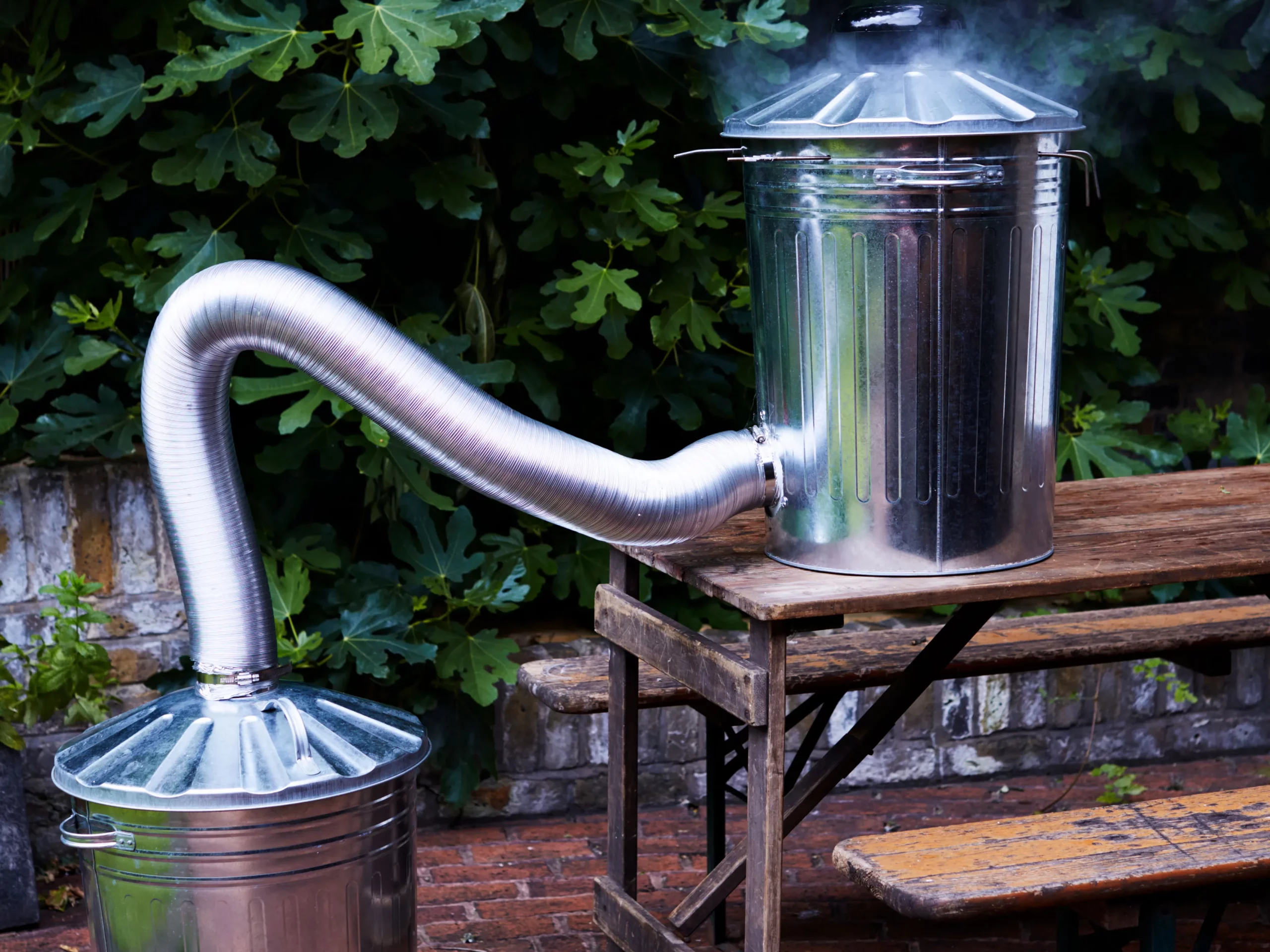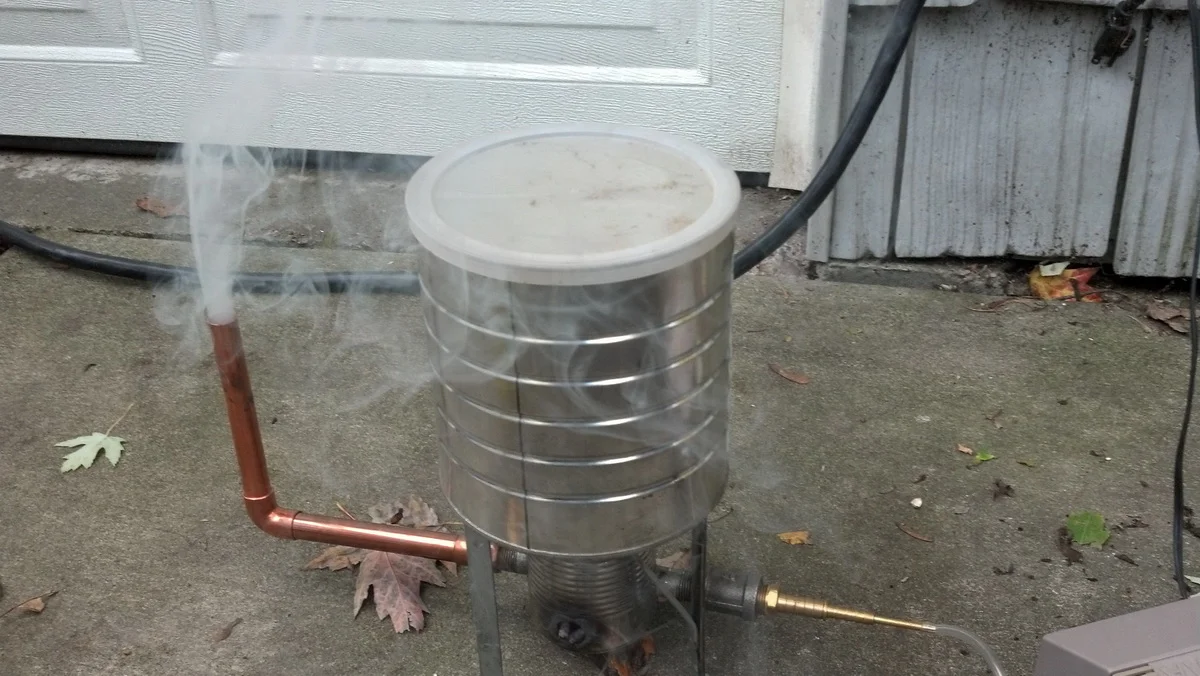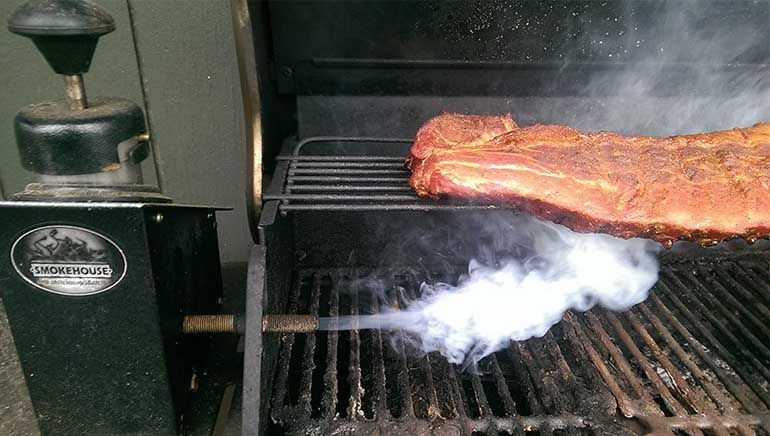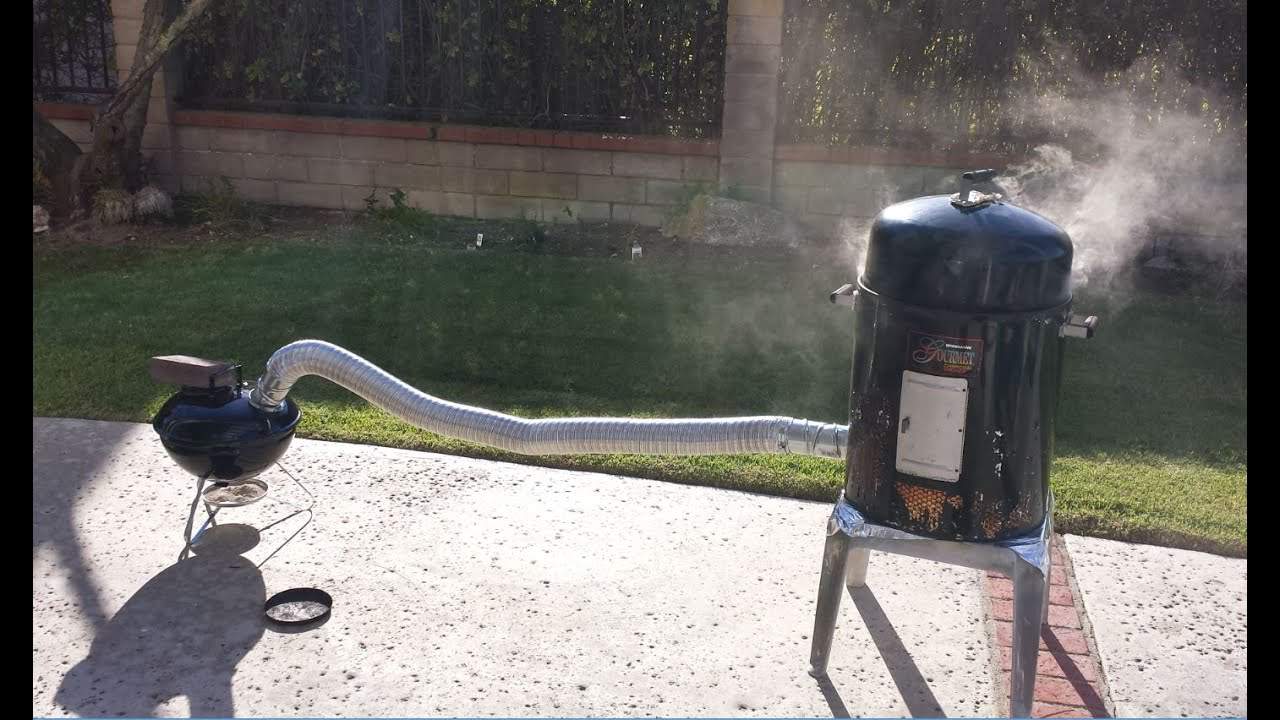Smoke Signals: Mastering the Art of Cold Smoking at Home
How to make a cold smoker? To make a cold smoker, construct a separate chamber connected to your main smoker, ensuring a consistent airflow while keeping the smoke source and heat separate, allowing for the cold smoking process.
Cold smoking is a popular method of food preservation and flavor enhancement that has been used for centuries. It involves smoking food at low temperatures, typically between 68°F and 86°F (20°C and 30°C), for an extended period of time.
This slow smoking process allows the food to absorb the smoky flavors without cooking it. Cold smoking is commonly used for meats, fish, cheese, and even vegetables. Before embarking on your cold smoking journey, it is important to understand the basics of this technique to ensure successful and safe results.
Understanding the Basics of Cold Smoking: A Beginner’s Guide
Cold smoking is a method of smoking food at low temperatures, typically below 90°F (32°C), for an extended period of time. Unlike hot smoking, which cooks the food as it smokes, cold smoking is primarily used for flavor enhancement and preservation. The low temperature allows the food to absorb the smoky flavors without cooking it. This technique is ideal for delicate foods that can easily overcook or lose their natural flavors when exposed to high heat.
The ideal temperature range for cold smoking is between 68°F and 86°F (20°C and 30°C). This low temperature ensures that the food remains raw while still absorbing the smoky flavors. It is important to note that cold smoking does not kill bacteria or pathogens, so proper food safety precautions must be taken when cold smoking perishable foods.
Common types of food that can be cold smoked include meats such as bacon, ham, and sausages, as well as fish like salmon and trout. Cheese, vegetables, and even fruits can also be cold smoked to add a unique smoky flavor to dishes.
The Advantages of Cold Smoking Over Hot Smoking
There are several advantages to cold smoking over hot smoking. One of the main advantages is the retention of natural flavors and textures in the food. Since cold smoking does not cook the food, it allows the natural flavors and textures to shine through. This is especially important for delicate foods that can easily become overcooked or lose their natural flavors when exposed to high heat.
Another advantage of cold smoking is the longer shelf life it provides to the smoked foods. The smoking process helps to preserve the food by inhibiting the growth of bacteria and other microorganisms. This allows the smoked foods to be stored for longer periods of time without spoiling.
Cold smoking also allows for the smoking of delicate foods that may not hold up well to hot smoking. Foods like cheese and vegetables can be cold smoked without losing their shape or becoming too soft. This opens up a whole new world of possibilities for adding smoky flavors to a variety of dishes.
Lastly, cold smoking reduces the risk of overcooking the food. Since the temperature is kept low during the smoking process, there is less chance of the food becoming dry or overcooked. This is especially important for meats that are best enjoyed when cooked to a specific level of doneness.
Choosing the Right Wood for Your Cold Smoking Session
Choosing the right wood for your cold smoking session is crucial to achieving the desired flavor profile in your smoked foods. The type of wood you choose will greatly impact the taste and aroma of the final product.
When selecting wood for cold smoking, it is important to choose hardwoods that have been properly seasoned. Hardwoods like oak, hickory, apple, cherry, and maple are commonly used for cold smoking due to their mild and sweet flavors. These woods provide a subtle smoky flavor that complements a wide range of foods.
It is also important to consider the type of food you will be smoking when choosing your wood. For example, stronger flavored woods like hickory and mesquite are better suited for meats, while milder woods like apple and cherry work well with fish and cheese.
To match wood with food, consider the intensity of the flavors you want to achieve. Stronger flavored woods like hickory and mesquite will impart a more robust smoky flavor, while milder woods like apple and cherry will provide a more subtle smokiness. Experimenting with different wood types and combinations can help you find the perfect flavor profile for your smoked foods.
Preparing Your Meat for Cold Smoking: Tips and Tricks
Properly preparing your meat before cold smoking is essential to achieving the best results. This includes brining or marinating the meat to enhance its flavor and texture.
Brining is a process that involves soaking the meat in a saltwater solution, known as a brine, for a period of time before smoking. This helps to tenderize the meat and infuse it with flavor. To create a basic brine, dissolve salt and sugar in water and add any desired herbs, spices, or aromatics. Submerge the meat in the brine and refrigerate for several hours or overnight.
Marinating is another method of preparing meat before smoking. This involves soaking the meat in a flavorful liquid, known as a marinade, for a period of time to enhance its flavor. Marinades can be made with a variety of ingredients such as oil, vinegar, citrus juice, herbs, spices, and aromatics. Place the meat in a container or plastic bag and pour the marinade over it. Refrigerate for several hours or overnight to allow the flavors to penetrate the meat.
In addition to brining or marinating, seasoning and flavoring the meat before smoking can further enhance its taste. This can be done by applying dry rubs or wet rubs to the meat. Dry rubs consist of a mixture of herbs, spices, salt, and sugar that are rubbed onto the surface of the meat. Wet rubs are similar but include liquid ingredients such as oil or vinegar to create a paste-like consistency. Allow the meat to sit with the seasoning for at least 30 minutes before smoking to allow the flavors to penetrate.
Cold Smoking Equipment: What You Need to Get Started
To get started with cold smoking, you will need some essential equipment. The most important piece of equipment is a smoker. There are several types of smokers available, including electric smokers, charcoal smokers, and pellet smokers. Electric smokers are the most convenient option as they allow for precise temperature control and are easy to use. Charcoal smokers provide a more traditional smoky flavor but require more attention and maintenance. Pellet smokers use wood pellets as fuel and offer a good balance between convenience and flavor.
In addition to a smoker, you will also need wood chips or chunks for smoking. These can be purchased in various flavors or you can make your own by drying and soaking hardwood chips or chunks. Wood chips are smaller and burn faster, while wood chunks are larger and burn slower, providing a longer smoking time.
Other essential equipment includes a thermometer to monitor the temperature inside the smoker, a drip pan to catch any drippings from the food, and a rack or tray to hold the food while it smokes. You may also want to invest in a cold smoke generator, which is a device that produces smoke without generating heat. This allows for true cold smoking without the risk of cooking the food.
The Art of Controlling Temperature and Airflow in Cold Smoking
Controlling temperature and airflow is crucial when cold smoking to ensure consistent results. The temperature inside the smoker should be kept within the ideal range of 68°F to 86°F (20°C to 30°C) throughout the smoking process.
To regulate temperature, it is important to have a reliable thermometer that can accurately measure the temperature inside the smoker. Place the thermometer near the food being smoked to get an accurate reading. Adjust the airflow vents on the smoker to control the amount of oxygen entering the smoker, which will affect the temperature. Opening the vents will increase the airflow and raise the temperature, while closing the vents will decrease the airflow and lower the temperature.
Maintaining consistent smoking conditions is also important for achieving the desired results. This can be done by monitoring the temperature and adjusting the airflow as needed. It is also important to avoid opening the smoker too frequently, as this can cause fluctuations in temperature and disrupt the smoking process.
Cold Smoking Safety: Precautions to Take While Smoking at Home
While cold smoking can be a fun and rewarding experience, it is important to take proper safety precautions to ensure that your smoked foods are safe to eat. Cold smoking does not kill bacteria or pathogens, so it is important to handle and store the food properly to prevent foodborne illnesses.
One of the most important safety precautions is to properly handle and store raw meat before and after smoking. Keep raw meat refrigerated at all times until it is ready to be smoked. Thaw frozen meat in the refrigerator or under cold running water, never at room temperature. After smoking, promptly refrigerate or freeze any leftover smoked meat.
It is also important to maintain proper hygiene while handling food. Wash your hands thoroughly with soap and water before and after handling raw meat. Use separate cutting boards, utensils, and plates for raw and cooked foods to prevent cross-contamination.
When cold smoking perishable foods like meat or fish, it is recommended to use a curing salt or nitrite cure. This helps to inhibit the growth of bacteria and prevent spoilage. Follow the instructions provided with the curing salt or nitrite cure carefully to ensure safe usage.
Cold Smoking vs. Curing: What’s the Difference?
Cold smoking and curing are two different methods of preserving and flavoring food. While they are often used together, it is important to understand the differences between the two.
Cold smoking is a method of smoking food at low temperatures for an extended period of time. It is primarily used for flavor enhancement and preservation. Cold smoking does not cook the food, but rather infuses it with smoky flavors. The low temperature allows the food to absorb the smoky flavors without cooking it.
Curing, on the other hand, is a method of preserving food by using salt, sugar, and other ingredients to draw out moisture from the food. This helps to inhibit the growth of bacteria and other microorganisms that cause spoilage. Curing can be done through dry curing or wet curing methods. Dry curing involves rubbing the meat with a mixture of salt, sugar, and other seasonings and allowing it to cure in a cool, dry place. Wet curing involves submerging the meat in a brine solution for a period of time.
While cold smoking can enhance the flavor of cured meats, it is not a substitute for the curing process. Curing is necessary to ensure the safety and preservation of the food, while cold smoking adds an additional layer of flavor.
Enhancing Flavor with Brining and Marinating Before Cold Smoking
Brining and marinating are two methods that can enhance the flavor of your smoked foods before they even hit the smoker. These techniques infuse the meat with additional flavors and help to tenderize it.
Brining involves soaking the meat in a saltwater solution, known as a brine, for a period of time before smoking. The salt in the brine helps to break down proteins in the meat, resulting in a more tender and flavorful final product. Brines can also be flavored with herbs, spices, sugar, and other ingredients to add additional layers of flavor.
To create a basic brine, dissolve salt and sugar in water and add any desired herbs, spices, or aromatics. Submerge the meat in the brine and refrigerate for several hours or overnight. The longer the meat is brined, the more flavor it will absorb.
Marinating is another method of enhancing the flavor of your smoked foods. This involves soaking the meat in a flavorful liquid, known as a marinade, for a period of time to infuse it with flavor. Marinades can be made with a variety of ingredients such as oil, vinegar, citrus juice, herbs, spices, and aromatics.
To marinate meat, place it in a container or plastic bag and pour the marinade over it. Make sure the meat is fully submerged in the marinade and refrigerate for several hours or overnight. The longer the meat marinates, the more flavor it will absorb.
Experimenting with Different Foods: Beyond Meat and Fish
While meat and fish are commonly cold smoked, there are many other foods that can be smoked to add a unique smoky flavor to dishes. Cold smoking opens up a whole new world of possibilities for experimenting with different foods.
Cheese is one food that can be cold smoked to add a smoky flavor. Hard cheeses like cheddar, gouda, and provolone work best for cold smoking as they can withstand the low temperatures without melting. Simply place the cheese on a rack or tray in the smoker and smoke for a short period of time to infuse it with smoky flavors.
Vegetables can also be cold smoked to add a smoky twist to salads, dips, and other dishes. Vegetables like bell peppers, eggplant, zucchini, and mushrooms work well for cold smoking. Cut the vegetables into slices or chunks and place them on a rack or tray in the smoker. Smoke for a short period of time until they are tender and infused with smoky flavors.
Other foods that can be cold smoked include nuts, tofu, butter, and even fruits like apples and pears. The possibilities are endless when it comes to cold smoking, so don’t be afraid to get creative and try new things.
Storing and Serving Cold Smoked Foods: Best Practices and Ideas
Properly storing and serving cold smoked foods is important to ensure their quality and safety. Cold smoked foods should be stored in airtight containers or wrapped tightly in plastic wrap or aluminum foil to prevent them from drying out or absorbing other odors.
Smoked meats can be stored in the refrigerator for up to a week, or in the freezer for several months. It is important to label and date the smoked foods to keep track of their freshness. Smoked cheese can be stored in the refrigerator for up to a month, while smoked vegetables should be consumed within a few days.
When serving cold smoked foods, it is best to let them come to room temperature before serving to allow the flavors to fully develop. Smoked meats can be sliced thinly and served on a charcuterie board with crackers, bread, and other accompaniments. Smoked cheese can be enjoyed on its own or used in recipes like sandwiches, salads, and pasta dishes. Smoked vegetables can be used in salads, dips, or as a side dish.
Get creative with your cold smoked foods by incorporating them into your favorite recipes. Use smoked meats in omelets, sandwiches, or pasta dishes. Add smoked cheese to pizzas, quesadillas, or grilled cheese sandwiches. Use smoked vegetables in salads, stir-fries, or as a topping for pizzas.
In conclusion, it is evident that technology has greatly impacted our lives in numerous ways. From the way we communicate and access information to the way we work and entertain ourselves, technology has become an integral part of our daily routines. While there are certainly drawbacks and concerns associated with its use, such as privacy issues and the potential for addiction, the benefits of technology cannot be ignored. It has revolutionized industries, improved efficiency, and connected people from all corners of the globe. As technology continues to advance at a rapid pace, it is crucial that we embrace its potential while also being mindful of its impact on society.
Originally posted 2024-02-07 00:18:24.




